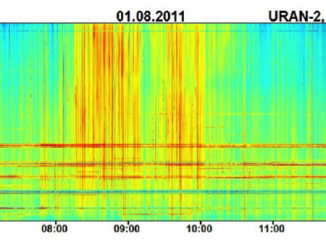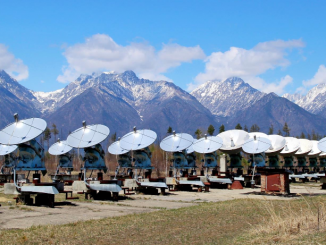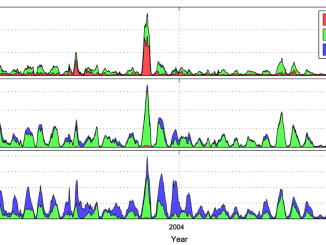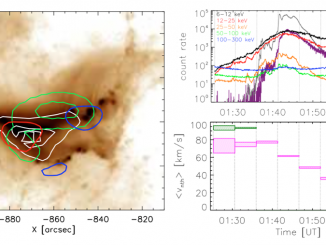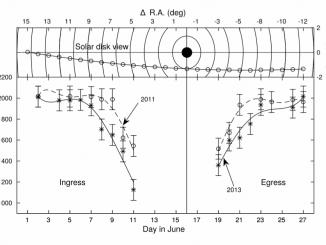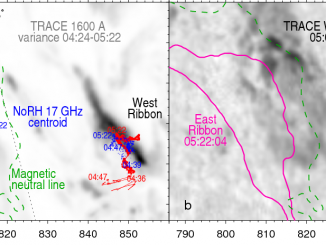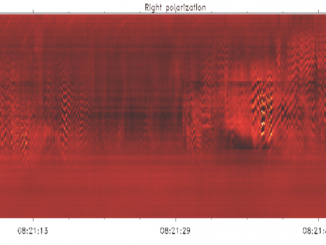Oscillation of solar radio emission at coronal acoustic cut-off frequency
by T. Zaqarashvili et al.
Recent SECCHI COR2 observations on board the STEREO-A spacecraft have detected density structures at a distance of 2.5-15 R$_{\odot}$ propagating with periodicity of about 90 minutes (Viall and Vourlidas 2015). The authors suggested that the density structures probably formed in the lower corona. We analyzed radio emission at the frequencies of 8–32 MHz, which correspond to a distance of about 1.5–2.5 R$_{\odot}$ according to the Baumbach-Allen model of coronal electron […]

